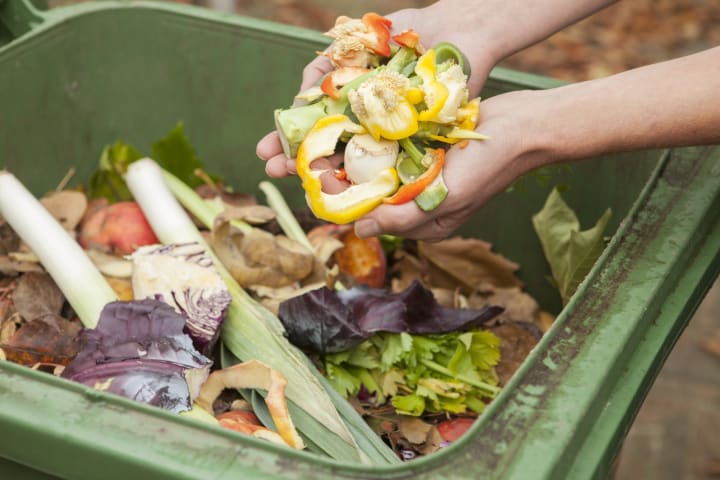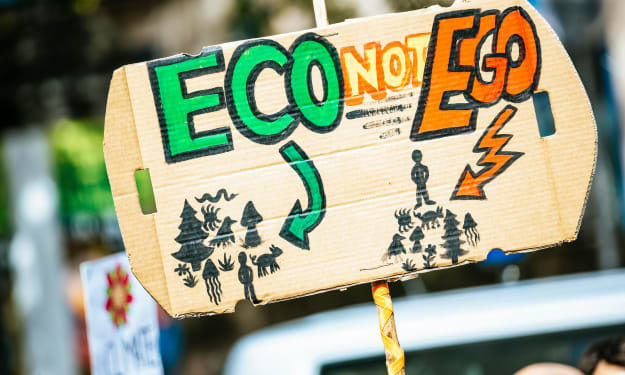Healing Our Mother Earth !!
Ways to reduce individual's carbon footprint

A carbon footprint is the total greenhouse gas (GHG) emitted by a person, group, product or event. It is also a crucial component of the Ecological Footprint.
Throughout a product’s lifetime, various greenhouse gases will be emitted, such as carbon dioxide (CO2), methane (CH4), and nitrous oxide (N2O), each with a greater or lesser ability to trap heat in the atmosphere.

Currently, the global average is 4 tonnes per person, with wide variation between countries. The approximate national average for the United States of America is 20, United Kingdom 9, and India 1.2.
Individual activities are estimated to contribute around 45% of your carbon footprint. The rest is our system-generated discharges related to services provided to ourselves or on our behalf.

The carbon Footprint is currently 60 % of humanity’s overall Ecological Footprint and it is growing rapidly at the moment. The human's carbon Footprint has increased 11-fold since 1961. Reducing human's carbon footprint is the most essential step we need to focus on.
Sources Of Emission
1. Food

Food accounts for 10-30% of a household’s carbon footprint, typically a larger portion in lower-income households. Food production emissions consist mainly of CO2, N2O, and CH4.
Meat products have larger carbon footprints per calorie than grain or vegetable products because of the inefficient conversion of plant energy to animal energy, and due to the methane released from manure management and enteric fermentation in ruminants.

A vegetarian diet greatly reduces an individual’s carbon footprint, but switching to less carbon-intensive meats can have a major impact as well. For example, chicken's greenhouse gas emissions per kg are approximately 7 times lesser than those of beef.
Eliminating the transport of food for one year could save the GHG equivalent of driving 1000 miles. While shifting to a vegetarian meal one day a week could save the equivalent of driving 1,160 miles.
2. Household Emissions

For each kilowatt-hour generated in the United States, an average of 0.953 pounds of CO2 is released at the power plant. Coal releases 2.2 pounds, natural gas releases 0.9 pounds and petroleum releases 1.9 pounds.
Solar, nuclear and hydroelectric will not release any CO2 when they produce electricity, but emissions are released during upstream production activities.

Refrigerators are one of the largest users of household appliance energy; in 2015, an average of 720.5 lbs CO2 per household was due to refrigeration.
26 MMT CO2 are released in the United States each year from washing clothes. Switching to a cold water wash once per week, a household can reduce its GHG emissions by over 70 lbs annually.
3. Personal Transportation

Cars and light trucks emitted 1.1 billion metric tons of CO2 or 17% of the total United States GHG emissions in 2018. Of the roughly 66,000 lbs CO2 emitted over the lifetime of an internal combustion engine car (assuming 93,000 miles driven), 84% come from the use phase.

Gasoline releases 19.6 pounds of CO2 per gallon when burned, compared to 22.4 pounds per gallon for diesel. However, diesel has 11% more BTU per gallon, which improves its fuel economy. The average passenger car emits 0.78 pounds of CO2 per mile driven.
Ways To Reduce Carbon Foot Print
1. Transport

Try walking, cycling or use public transport to get to school or work. On average, for each litre of fuel burnt in a car engine, more than 2.5 kg of CO2 are produced.
Avoid short car journeys because fuel consumption and CO2 emissions are disproportionately higher when the engine is cold. Research shows that one in two urban car journeys is for under 3 km.

Try to travel by train. One person travelling by car alone produces 3 times more CO2 emissions per km than if this person were travelling by train.
Don't drive fast. Driving faster than 120 km per hour increases fuel consumption by 30% compared with driving at 80 km per hour. Higher gears (4th, 5th and 6th) are the most economical in terms of fuel consumption.
2. Food

Reduce intake of meat products. Industrialized countries need to reduce their meat consumption from the current 224 g to 90 g per person in a day. This would have a significant effect on carbon levels and health.
Try to eat seasonally and locally produced items. Fresh, locally grown, seasonal food generally uses less energy to produce. It burns up fewer food miles, as the distance it has to travel from farm to plate requires less fuel.
Try not to waste food. Only buy or order what you need.

Recycling organic waste will also help us to reduce our carbon footprint. Methane released by the decomposing biodegradable waste in landfills accounts for around 3% of the European Union’s greenhouse gas emissions. By recycling your organic waste, or composting it if you have a garden, you can help eliminate this problem!
3. Energy Use

Install good home insulation. This is one of the most effective ways to reduce CO2 emissions and save energy in the long term. Heat loss through walls, roof and floor commonly accounts for over 50% of overall space heat loss.
Insulate your hot water tanks, the pipes of your central heating, windows (see below), roofs, ground floors as well as your wall cavities, and fit aluminium foil behind your radiators. In tropical climates (and during heatwaves) good insulation will help keep heat out.

Move your fridge and freezer away from the cooker or boiler. Placing next to them consumes much more energy than if they were standing on their own.
Don’t put hot or warm food in the fridge. You save energy by letting it cool down first before placing it in the fridge.
Use energy-saving light bulbs. Just one can reduce your lighting costs by up to € 60 and avoid 400 kg of CO2 emissions over the lifetime of the bulb and they last up to 10 times longer than ordinary light bulbs. Energy-saving bulbs are more expensive to buy but cheaper over their life span.

Unplug your mobile telephone charger when you are not using it. Even when it is not connected to the telephone, it is still draining electricity. There are estimates that 95% of the energy is wasted when you leave the charger plugged in all the time.
4. Water Use

Conserve household water. Identifying and encouraging people to collect and use “grey” water for washing, bathing and watering gardens and livestock will help preserve drinking water supplies.
Irrigate home gardens (in dry environments). Use barrier methods (contour bounding, gully plugging, checking dams and dykes, etc.) to catch rainwater and give it time to soak into the ground (reduce runoff), lifting water tables and hence the availability of drinking water.

Take a shower instead of a bath. Doing so takes up to four times less energy. To maximize energy saving, avoid power showers and use low-flow showerheads, which are cheap and provide the same comfort.
Use the washing machine and dishwasher only when they are full. If you need to use a machine when it is half full, then use the half-load or economy setting. There is also no need to set the temperatures high. Nowadays detergents are so efficient that they get your clothes and dishes clean at low temperatures.
5. Waste Management: Reduce, Reuse, Recycle

Reduce waste. Most products we buy cause greenhouse gas emissions in one way or another, e.g. during production and distribution. By taking your lunch in a reusable lunch box instead of a disposable one, you save the energy needed to produce new lunch boxes.
Choose products that come with little packaging. Buy refills when you can. you will also cut down on waste production and energy use!

Buy intelligently. One bottle of 1.5 litres requires less energy and produces less waste than three bottles of 0.5 litres.
Stop household burning of rubbish. Household burning of rubbish adds to emissions and risks releasing toxic chemicals into the atmosphere.
Resources
About the Creator
Enjoyed the story? Support the Creator.
Subscribe for free to receive all their stories in your feed. You could also pledge your support or give them a one-off tip, letting them know you appreciate their work.






Comments
There are no comments for this story
Be the first to respond and start the conversation.